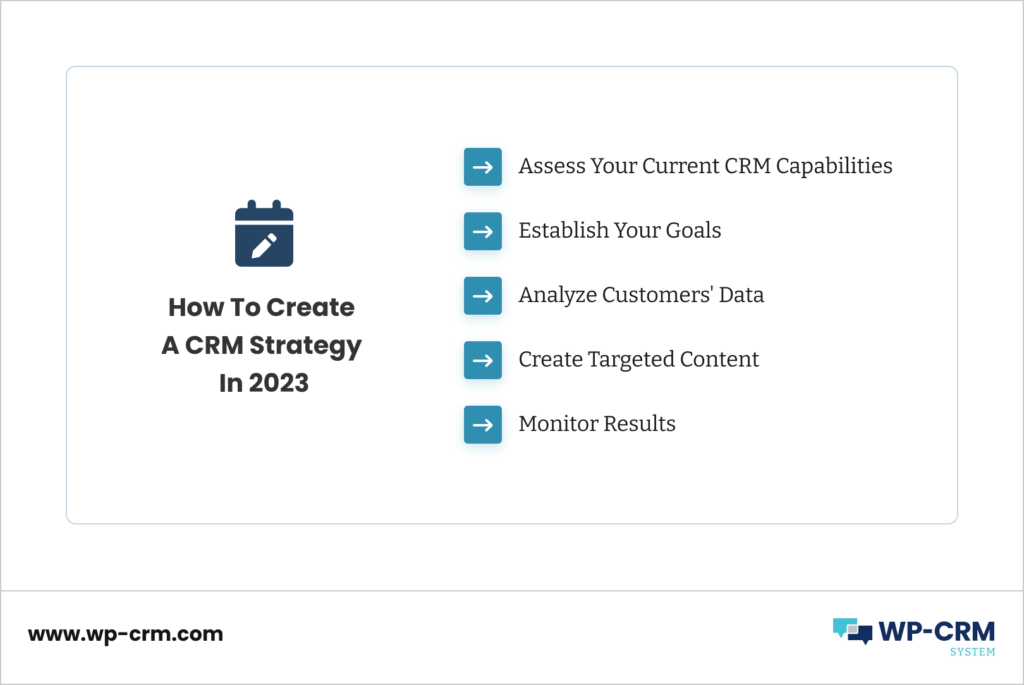5 Steps To Creating A CRM Strategy In 2023
A CRM strategy done right can work wonders for your business. It applies to all important aspects of growth, sales, customer service and marketing in particular. In fact, it may positively affect customer retention, improve lead conversion and grow revenues faster. After all, 80% of customers are more likely to make a purchase when they receive a personalized experience. A good CRM tool that has the right features, and a well-trained team can achieve just that and make sure they don’t miss or delay any important messages with your clients.
However, a lot of businesses implement a CRM system in their operations, and yet, 90% of companies state that it failed to boost business growth. The reason is – the lack of a proper, carefully crafted CRM strategy with well-defined goals and points of action. In this article, we will first explain what a good CRM strategy entails, and also, what the steps to build a successful one are.
What Is A CRM Strategy?

A CRM strategy is a plan of action meant to achieve the desired customer relationship management (CRM) objectives for an organization. The strategy defines the goals and resources for achieving those goals, specifically in terms of marketing, sales and customer service activities. It focuses on the customer lifecycle from acquisition to retention. Also, it provides techniques for maximizing revenue potential from each stage.
Moreover, a comprehensive CRM strategy should include a plan for implementing and managing data collected about customers, analyzing that data to gain insight into past performance and current trends, and creating content that resonates with customers. This data-driven approach helps organizations build relationships with customers, create personalized experiences, better anticipate needs and increase loyalty.
Finally, having an effective CRM strategy isn’t only beneficial when it comes to operations. It can also improve financial performance by providing insights into inefficiencies or areas needing improvement. Additionally, it can give companies greater control over lead generation costs by helping them target audiences more effectively. By taking all these factors into account when developing a CRM strategy, organizations can maximize the effectiveness of their customer relationships and drive business success.
How To Create A CRM Strategy In 2023

Step 1: Assess Your Current CRM Capabilities
The first step in the process of creating an effective CRM strategy is to assess your current capabilities. This includes looking at how you are currently managing customer data, analyzing customer feedback and insights, and exploring ways to improve customer service. Additionally, as technology continues to evolve rapidly, it’s important to review the tools you have in place and identify any areas where that need updating or improvement. If you are planning to adopt a CRM system, be sure it has all essential features.
Step 2: Establish Your Goals And Objectives
The next step is to establish your goals and objectives for the coming year. It’s important to be realistic — you don’t want to set yourself up for failure by setting unattainable expectations! Think about what you hope to achieve in terms of revenue growth, improved customer retention, enhanced brand recognition or reach, etc. Then, determine what metrics you should use to measure success along each of these paths.
Step 3: Analyze Your Data
Data analysis is key to creating an effective CRM strategy as it helps inform decisions about which tactics should be used in order to reach your desired outcomes. Customer insights can help you gain insight into how customers behave so that you can adjust strategies accordingly. For example, you can better understand spending habits or preferences and create targeted promotions or loyalty programs. Additionally, analyzing past performance can help you forecast future trends and develop strategies based on these predictions.
Step 4: Create Targeted Content With A Personal Touch
Next, it’s time to start creating content that truly resonates with customers while still staying true to your brand voice. Whether through emails or social media posts, ensure that all campaigns are customized according to each individual target audience. This could be anything from offering personalized discounts based on purchase history, or content tailored towards certain hobbies/interests As a result, customers will feel heard by your company rather than just getting a generic message sent out en masse.
Step 5: Monitor Results And Adjust As Needed
Finally, after you’ve planned and put your new CRM strategy into action, it is essential to remain vigilant. Keep monitoring the results while assessing any necessary alterations throughout its implementation. Gathering feedback from each campaign or session with surveys is an effective way to measure success. Also, this way you gain insights on any needed changes like supplying extra resources if required. These components come together harmoniously and can guarantee a continuous streak of success!
Final Words
In conclusion, creating an effective CRM strategy in 2023 is possible with thoughtful consideration and planning. From defining specific goals to investing in tools, these five steps will help shape an efficient strategy that can be built upon as the years pass. As CRM technology continues to evolve and become more accessible around the world, organizations need to stay ahead of the curve by understanding what resources are available today and how they can strategically use them in the future.
